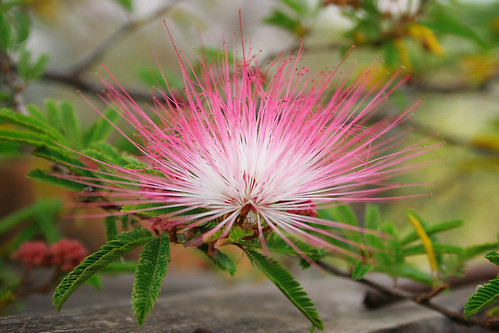Neli
Omono
Scroll down and you'll see a mimosa by Bill Valavanis.
http://artofbonsai.org/galleries/valavanis.php
That is now classified as caliandra and is not really a true mimosa.
Scroll down and you'll see a mimosa by Bill Valavanis.
http://artofbonsai.org/galleries/valavanis.php
That is now classified as caliandra and is not really a true mimosa.


Given the general definition of Bosai...
1. The art of growing dwarfed, ornamentally shaped trees or shrubs in small shallow pots or trays.
2. A tree or shrub grown by this method.
Junk becomes an opinion based on application...
At this time after moving(and giving away a LOT of stock) I am guessing there are about 10 very nice Bonsai here by the Community Standards and not by simple definition. We have about another 15 trees in pots that we "thought" might have potential. The 15 or so remain potted and are what we call decorative. By definition they are Bonsai but will never be anything more then very nice decorative trees to us. Are they "junk"? Not by any means, and still by definition they are Bonsai... When the Gardens here are completed next year I will be working in the decorative with the "Good" and am certain it will be pleasing to the eye. In the years to come I have decided that I will only be adding finished or close to finished trees and only work on 7 to 10 "experimental" each season and weed out regularly rather then amass what I gave away again.
No Living plant is "junk" IMHO...
Grimmy
I would not attempt a Sycamore or a Tulip poplar as bonsai; however, to someone else the intense spring green unfolding from the bud sheath may make it "worth the effort" for them.
True. And there are various reasons why people buy those "culled" trees from the raffle table. For instance, at our summer picnic last year someone was selling a sweetgum (liquidambar styraciflua) they'd been working on. Not a very good specimen, decent roots and lower trunk but the branching is iffy as is the apex. However, I was thrilled to get it as a practice tree. I'm planning to use it to figure out how to control ramification and leaf size while another specimen I'm developing in the ground matures. Eventually, the one I purchased last summer may either go into the ground for further development or back onto the raffle table for someone else to learn from.One mans garbage is another mans treasure.
I don't know how many trees I've seen on raffle tables that the owner thought was junk only to be won by someone newer who was thrilled. What we may consider great today could be thought of as junk later as we learn and the reverse can also be true-though not as often.
True. And there are various reasons why people buy those "culled" trees from the raffle table. For instance, at our summer picnic last year someone was selling a sweetgum (liquidambar styraciflua) they'd been working on. Not a very good specimen, decent roots and lower trunk but the branching is iffy as is the apex. However, I was thrilled to get it as a practice tree. I'm planning to use it to figure out how to control ramification and leaf size while another specimen I'm developing in the ground matures. Eventually, the one I purchased last summer may either go into the ground for further development or back onto the raffle table for someone else to learn from.
Chris
I don't think that the fundamental meaning of this question was to sort out the esoteric values of a tree based on information known only to the grower. You can't put value on something like that where that value is not transferable, it is therefore, for all intents and purposes, value-less.
The purpose of this discussion, though fraught with multiple opportunities for disagreement, is essentially dealing with the artistic or aesthetic values, or potential for the same, from a particular piece of material. The claim that the tree was grown by a favorite Aunt, though important to you, does not make it valuable to me as a bonsai or as a plant with bonsai potential.
There are trees that the majority of the bonsai community will agree as being bad for bonsai can at times be proven to be good for bonsai but those events do not happen often.
What you need to do with that tree is experiment with it. Try treating it like a Japanese Maple. In the spring when it buds out and puts out two leaves pluck the growing tip out of each branch. This may cause it to ramify with smaller leaves. A lot of the time people will take on a tree like this and when it does not do what they want it to do they kind of stop trying to get it to do that. Most of these trees will not develop the way we want without our intervention, constant intervention.
What you need to do with that tree is experiment with it. Try treating it like a Japanese Maple. In the spring when it buds out and puts out two leaves pluck the growing tip out of each branch. This may cause it to ramify with smaller leaves. A lot of the time people will take on a tree like this and when it does not do what they want it to do they kind of stop trying to get it to do that. Most of these trees will not develop the way we want without our intervention, constant intervention.
